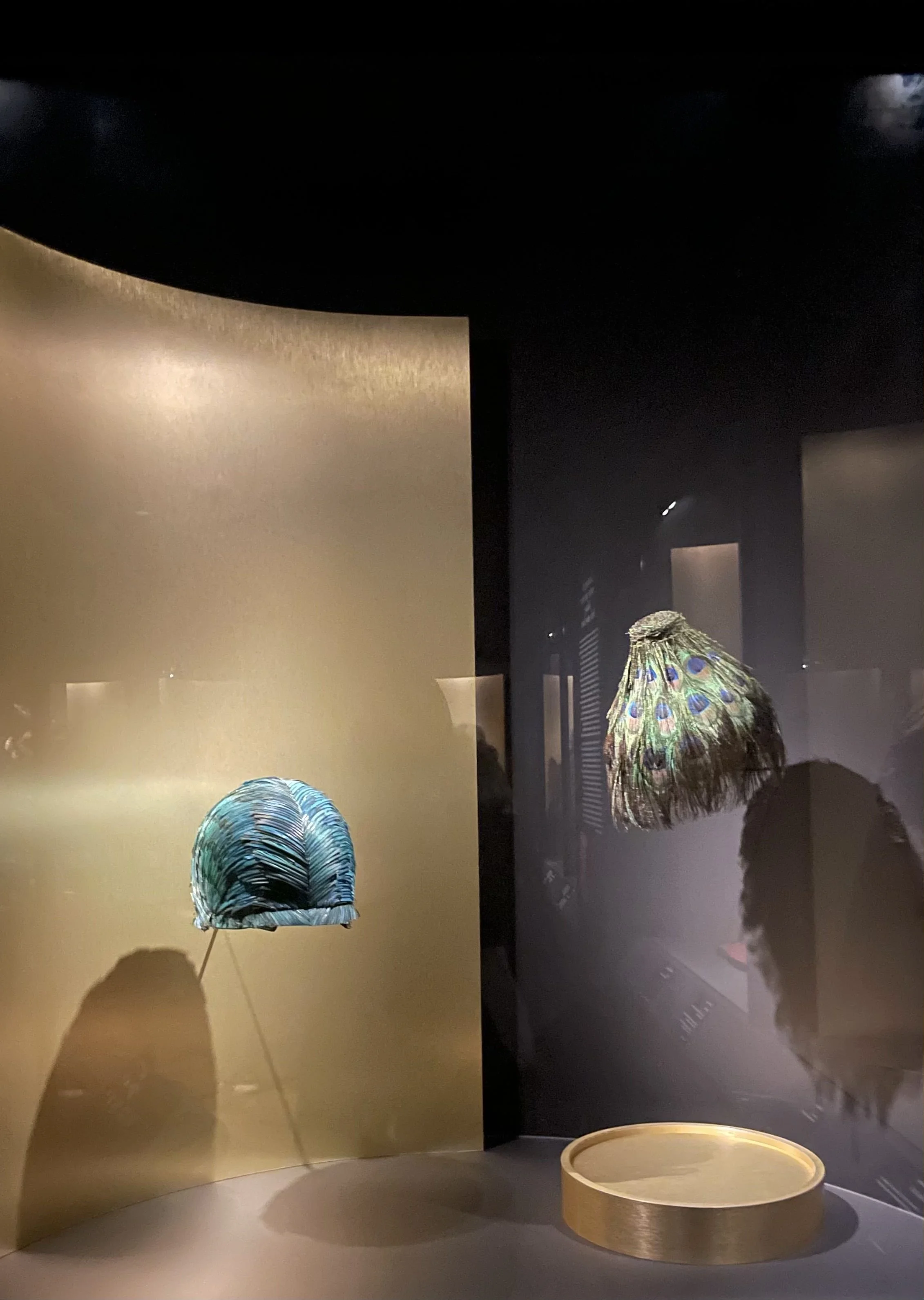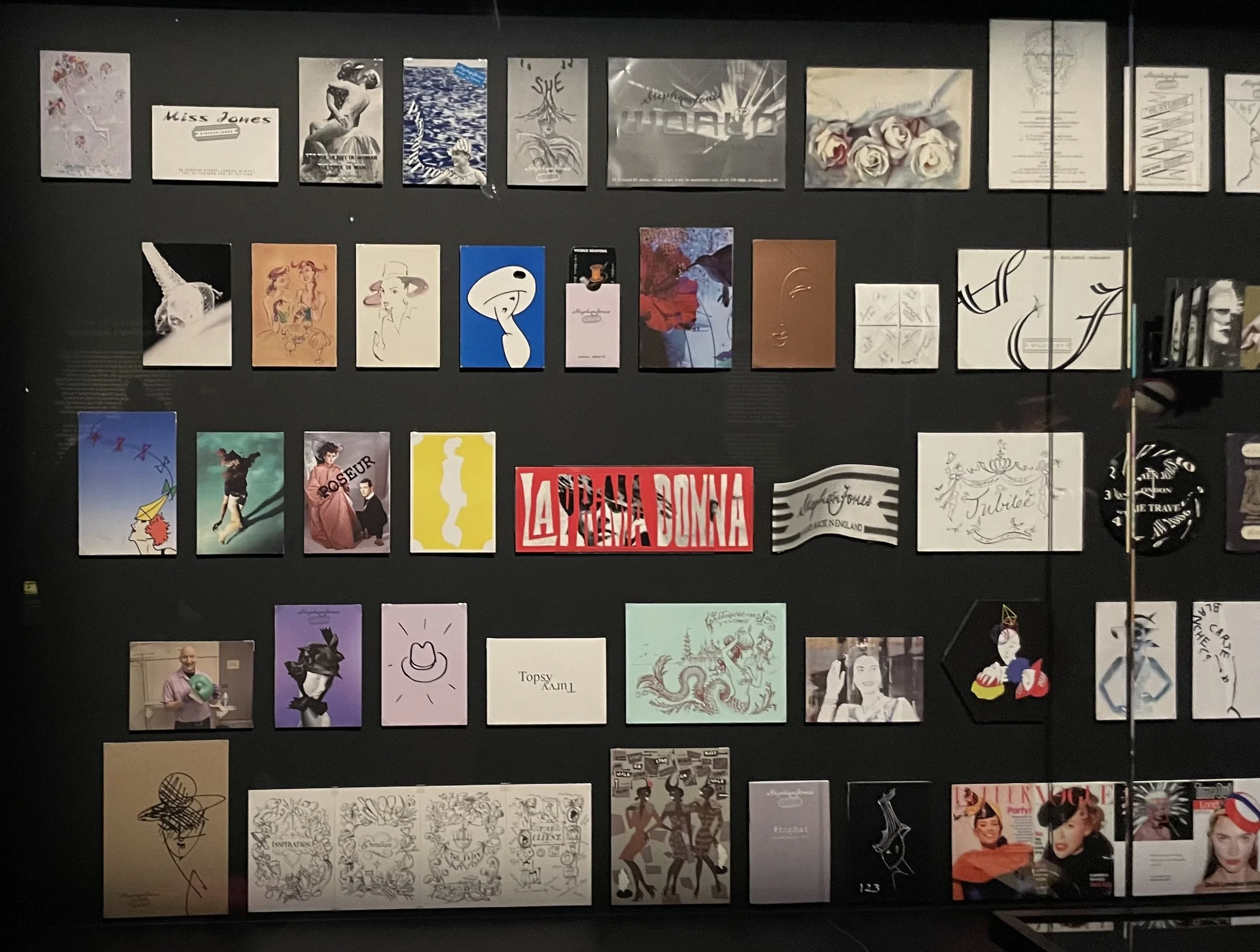Stephen Jones Chapeaux D’artiste, 2024 at Palais Gallliera, review
There are many fashion exhibitions about designers, yet, I believe we can count exhibitions about milliners with our fingers. Demographically, there are incomparably more fashion designers, but the concept of a milliner still doesn't ring with people.
Palais Galliera delightfully tells us about the career of milliner Stephen Jones and his relationship with Paris: a city of close friendships and dynamic inspiration.
On my way to Palais Galliera was special, thanks to the playlist Stephen Jones curated. Soft Cell, Roxy Music, David Bowie and Joy Division - punk icons representing his peculiar youth and friendships at Blitz in London.
Indeed, the second part of the exhibition, Le Blitz club, welcomes us with the 80s punk musics and disco lights. It's the culture he used to be soaked in and spread his wings as a unique, singular milliner. You can see the Scarlett hat, shining like crystal, and other hats such as the one created for Boy George. In the room, I saw endearing mother-daughter pairs, with mothers leading conversations, and other visitors of diverse age groups as well, chatting in front of Jones' works under the music. At the same time, I think this exhibition is particularly valuable in a way that a fashion exhibition enables people to share their experiences across generations, making me a mom smile as an observer.
This autobiographical exhibition celebrating the milliner's 45th career, shares his early life and nationality as a British. From the union jack hat to the one worn by princess Diana's are displayed as vivid evidence of British history. Juxtaposition of his collection invite cards breathe like book covers of his creative journey.
Jones' works are placed in vitrines or on mannequins remotely that visitors could feel slight distance, there's a sense of separation. The hats seemed like paintings, as we could see them in front of it. If the hats were displayed without vitrines and mannequins were a bit closer, we might feel his works more theatrically, correspond to his imagination.
Stephen Jones has created distinctive hats, which declare "I'm from Stephen Jones". - you can wear hat of Eiffel tower, a jellyfish and a feather a helmet attached peacock feathers - literally from any materials we see and dream of. That's how he has been the top-tier milliner that designers want to put his name in their collections.
The cultured, punk boy received woos for collaboration from legendary fashion designers such as Thierry Mugler, Raf Simons, John Galliano, Rei Kawakubo, Walter Van Beirendonck, Azzedine Alaïa, Schiaparelli and many more.
I found from an interview that once he said that not every collaborations was easy, but we can clearly tell he has done speechless jobs embodying the punk spirit " You are capable of doing what you want, you just have to believe in it".
The haute couture hatter's creativity has enriched each hat's identity and embellished the English punk culture regardless of sizes of hats.
After the exhibition, in the shop, we can find the newspaper, Bolovision, second issue. It features photos of Stephen Jones, his work process and behind the scenes taken by his close photographer friend, Koto Bolofo. I could not pass it without purchasing it. We may less reading newspapers, but the information in printed newspaper is reliable than what we find on screens, doesn't it?
E/MOTION. Fashion in Transition, 2021 at Momu, review
Topics that seem obvious now may not have been so in the past, and they may not be taken for granted in the future. Therefore, it’s essential to stay aware of what’s happening around us.
The fashion museum, MoMu in Antwerp, hosted the exhibition E/MOTION: Fashion in Transition, addressing themes that have shaped discourse for decades.
The exhibition was divided into several thematic rooms, each focusing on subjects like the body, camouflage, home, drugs, the internet et cetera. These topics are friendly topics that appears frequently.
It's reciprocal for both brands and consumers when fashion labels have social and political voices. It gives an intellectual value, i.e. Prada's press release, and authentic personality, i.e. GMBH's speech (2024). And for consumers, they end up wearing intellectual values.
In the last room, a screen played interviews with designers and fashion students, many of which deeply resonated with me. The interviewees came from diverse sectors and age groups within the fashion industry. Without a singular protagonist or the glorification of one’s work and skill, the exhibition felt refreshingly democratic.
The exhibition stayed for long inside my head that it presented clothes as a medium to throw questions. The exhibition conducted contemporary curatorial practices by using fashion as cultural production.
Furthermore, speaking of emotions, in the current society, where emotion causes consumption, such as revenge shopping, or buying clothes, foods or cigarettes, this exhibition made me to reflect on my emotions in personal level.






